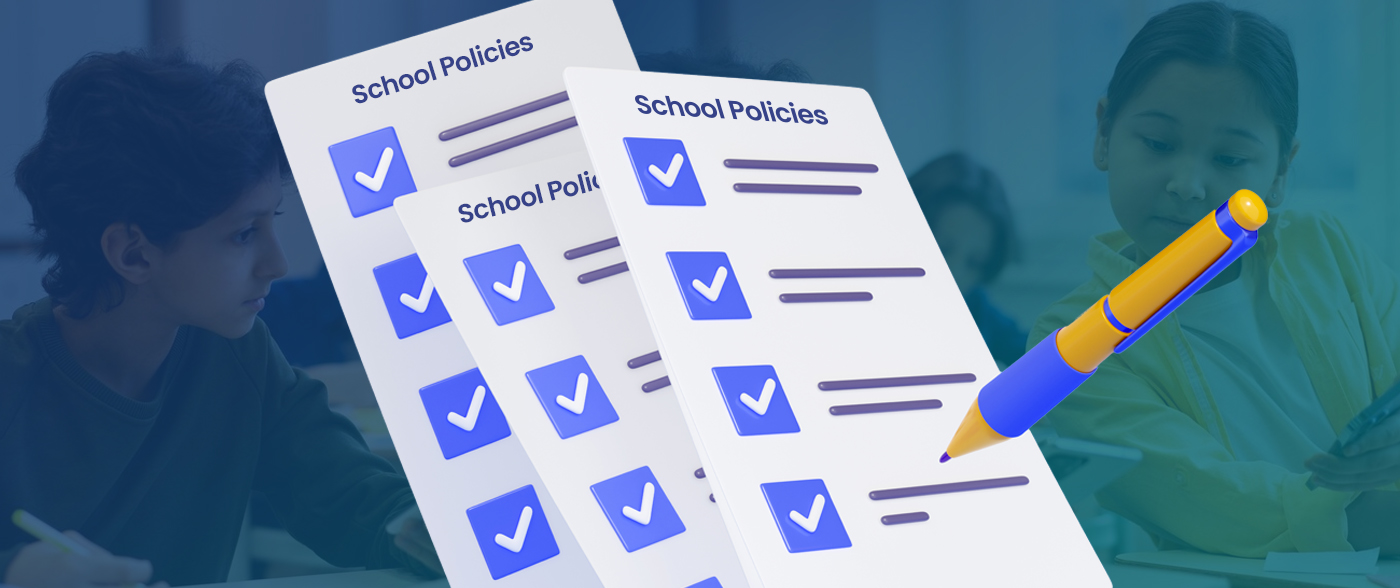I’ll never forget my first teaching job—day one, I got handed a binder full of school policies. Dress code, attendance, tech use… you name it. But here’s the thing: most of the rules were written like legal documents, and few actually reflected what students needed to succeed.
Over time, I’ve learned that good school policies aren’t about control—they’re about creating a safe, fair, and supportive learning environment. Policies should guide behavior and expectations, yes—but they should also reflect the values of your school and support both students and staff.
Let’s talk about how to build school policies that actually work—for everyone.
🏫 What Are School Policies?

School policies are the formal rules and guidelines that govern how a school operates. They cover everything from:
-
Student behavior
-
Attendance and discipline
-
Dress code and tech use
-
Equity and inclusion
-
Safety protocols
-
Academic integrity
Well-designed policies help everyone—students, teachers, parents, and administrators—know what’s expected and what to do when challenges arise.
But if those policies are outdated, inconsistent, or unclear? They can do more harm than good.
✅ Key Characteristics of Effective School Policies
An effective school policy should be:
1. 🎯 Clear and Understandable
Policies should be written in plain language—not legal jargon. If a student (or parent) can’t understand the policy, it won’t be followed.
Test: Could a 14-year-old read it and explain it to a friend? If not, simplify it.
2. ⚖️ Fair and Consistent
Policies must be applied equally to all students, without favoritism or bias.
That means:
-
Consistent enforcement
-
Clear consequences
-
No exceptions unless specifically stated
Fair doesn’t always mean “same”—but it should always mean just.
3. 🌍 Inclusive and Equity-Focused
Policies must account for the diverse needs of students knowledge, including:
-
Students with disabilities
-
English language learners
-
Cultural or religious differences
-
LGBTQ+ students
Ask: Does this policy work for all our students—or only some?
Inclusive policies show students that they belong—and their identity is respected.
4. 👂 Created with Stakeholder Input
Don’t write policies behind closed doors. Involve:
-
Students
-
Parents
-
Teachers
-
Counselors
-
Support staff
When people help create the rules, they’re more likely to follow and support them.
5. 🔁 Flexible and Reviewable
Schools evolve—and so should policies. Build in a plan to review policies regularly, ideally every year or two.
Things to consider:
-
Is the policy still relevant?
-
Are students and staff aware of it?
-
Is it achieving its goal?
-
Has society, technology, or law changed since it was written?
🧩 Common Types of School Policies (and Tips for Writing Them)
Here’s a look at some key areas and how to approach them thoughtfully:
📵 Technology Use Policy
Old version: No phones allowed in class. Period.
Better version: Phones must be silenced and stored during instruction unless used for learning purposes. Teachers may permit use at their discretion.
✅ Tip: Include guidelines for acceptable use of devices, digital citizenship, and consequences for misuse.
🎒 Dress Code Policy
Old version: No hoodies, leggings, or visible tattoos.
Better version: Students must wear clothing that covers the body and allows for full participation in learning. Clothing cannot contain hate speech, violence, or profanity.
✅ Tip: Focus on function and respect, not control. Avoid language that targets gender, race, or culture.
🕒 Attendance and Tardiness
Old version: 3 unexcused absences = automatic failure.
Better version: Students are expected to attend regularly. Support is available for chronic absence due to health, family, or transportation challenges.
✅ Tip: Include proactive steps (like check-ins or family contact) before consequences kick in.
🧑⚖️ Discipline and Behavior
Old version: Zero tolerance for fighting = suspension.
Better version: Physical altercations will be investigated case-by-case. Restorative practices may be used in addition to consequences.
✅ Tip: Use language that prioritizes restoration and learning over punishment.
🏳️🌈 Equity and Inclusion
Make sure to include or reference:
-
Anti-discrimination statements
-
Support for marginalized students
-
Complaint and reporting procedures
-
Safe spaces and support roles (counselors, advisors)
✅ Tip: This isn’t an “extra” policy. It should be foundational to everything else.
🧠 How to Make School Policies Work in Practice
Writing the policy is only step one. Here’s how to make sure it actually works:
📣 1. Communicate Clearly
-
Share policies during orientation
-
Post online in an easy-to-find location
-
Use visuals and plain language for younger students
-
Translate into multiple languages if needed
🤝 2. Train Staff and Teachers
Make sure everyone understands:
-
How to implement policies fairly
-
How to talk about them with students
-
How to handle violations consistently
🎓 3. Educate Students, Don’t Just Enforce
Policies are teaching tools. Use them to build:
-
Responsibility
-
Empathy
-
Decision-making skills
Example: Instead of just punishing cheating, teach why academic honesty matters and how to avoid plagiarism.
🧭 Final Thoughts: Policies That Support, Not Control
School policies should do more than manage behavior—they should set the tone for a healthy, respectful, inclusive learning environment.
The best ones are:
-
Created with care
-
Communicated with clarity
-
Applied with compassion
When done right, policies don’t just keep order—they build trust, foster belonging, and empower students to grow into their best selves.


